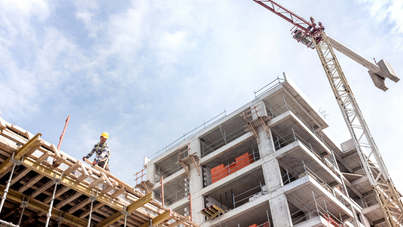Author
Arising from the tragic events at Grenfell, there has been a process of consultation with approximately 49 developers who each signed the ‘Building Safety Pledge’ and the Home Builders Federation. The Department for Levelling Up, Housing and Communities (DLUHC) issued a letter on 30 January 2023 to those developers (and a few others) requiring them to sign a contract which incorporates its ‘self-remediation terms’. This contract has to be signed by no later than 13 March 2023, but by 10 February 2023 those developers are required to notify the DLUHC of their timeline for signing the contract and to whom it should be sent.
Whilst the requirement to sign the contract currently lies with those 49 developers only, the accompanying Statement made by the Rt Hon Michael Gove MP indicated that other developers who meet the relevant criteria will also be ‘invited’ to sign the contract. The Statement confirms that DLUHC is also putting on notice those other developers who meet the criteria and their possible future liabilities arising from this contract. The DLUHC invitation letter states that if a developer fails to meet the 13 March 2023 deadline this will result in the DLUHC blocking that developer from becoming a ‘Responsible Actor’ under the soon to be in-force sections 126-129 of the Building Safety Act 2022 (BSA). The practical effect of this is that the defaulting developer will not be able to commence any developments it has planning permission for or to receive building control approval for current schemes. No doubt a similar sanction will apply to other developers who are subsequently invited but opt not to sign the contract.
So, whilst this contract is currently only relevant to the current tranche of developers, based upon the Statement, it is expected that this contract (or similar) may be rolled-out to other developers later this year. As such, it is worth having an overview of its terms.
Who is a ‘developer’ under the self-remediation terms?
For the purposes of the contract (in broad terms) a developer is an entity (or a member of its Group) who played a role as a developer or refurbisher (but not a contractor) in respect of any residential and/or mixed use building, which includes one or more residential properties and has an effective height of 11 metres or above (as measured in accordance with Approved Document B – Diagram D6 – namely from the ground floor to the top of the last floor slab) in the 30 year period prior to 5 April 2022. You will note that this definition does not relate to who currently owns or manages the building but is focusing on who initially ‘developed/refurbished’ the building. The contract also addresses the scenario where the developer was part of a joint venture.
What is the purpose of the contract?
In general terms, the purpose of the contract is to transfer the cost of carrying out the remediation of ‘life-critical fire safety defects’ from leaseholders to the developer. In addition, any monies awarded by the government under its funding schemes to make the building safe will have to be paid back to the government, as well as certain categories of costs incurred by the fund and/or by the building freeholder, superior leaseholder and/or management company (as applicable). However, it is not intended to affect usual repairs and maintenance works which are not ‘life-critical fire safety defects’.
What are the key requirements and processes within the contract?
It is difficult to summarise all 90 pages of the contract within this article but once the developer is invited to sign the contract, the following process is undertaken.
In broad terms, the agreement which forms the contract requires the developer to provide information including:
- A list of all residential and/or mixed-use buildings which contain one or more leasehold properties and in respect of which the developer, or any company within its group, played a role as a developer or refurbisher (but not as a contractor) in the 30 years prior to 5 April 2022.
- A list of all buildings which contain a ‘defect’ – being a fault which gives rise to a life-critical fire-safety risk.
- Details of any building(s) which have been, or are subject to, Stage A, B, C or D government funding whether from the Government’s Building Safety Fund, Private Sector ACM cladding remediation fund, Social Sector ACM cladding remediation fund, Cladding Safety Scheme or any other government fund.
- Certain company information for the developer.
- A list of companies within the same group as the developer.
It may be that some developers will already know if a building contains a ‘defect’ and therefore it can be listed in the agreement. However, for those developers who are unable to provide a complete list of such buildings, the contract requires them to establish as soon as reasonably practicable which buildings contain a defect.
Within 30 business days of signing the contract, the developer is required to submit a ‘Data Report’ to the DLUHC which is to be updated quarterly. At the same time, the developer is required to describe:
- The process undertaken in establishing the list of buildings with a defect and, if not yet established, the method to be undertaken and the target date by which this process will be completed.
- The buildings which are required to have an up-to-date fire safety assessment and a justification of the type of assessment proposed.
- The buildings which require remedial works to be carried out and a justification of the order in which those works will be carried out.
A director of the developer company is also required to provide an attestation that the information in the Data Report provided is correct.
In very general terms, the developer is then obliged to arrange for, or fund the works to be carried out to rectify the defects in accordance with the dates stated in the quarterly Data Reports.
Once the remedial works have been completed, the developer is required to commission a ‘qualifying assessment’ from a qualified fire risk assessor. The DLUHC is allowed to audit the qualifying assessment within two years of its issue. If there are no outstanding defects within the two years, then the developer’s obligations under this agreement will have been discharged and the developer is released.
In addition to these fundamental points, there are many other provisions within the terms. These include:
- The rights of leaseholders
- The arrangements which apply where a joint venture was used to develop the project
- The funding by the developer of a ‘responsible entity’ to commission the works
- The other costs which the developer is required to pay
- The repayment of monies obtained under government funded schemes
- The rights of novation and the enforcement of the agreement by third parties including leaseholders
- The restriction on the developer in restructuring its corporate structure
We will address some of these aspects in future articles. In the meantime, if you think you may be a developer as described above, it will be worth collating the necessary information to add into the agreement and the current fire safety status of those buildings which are affected.
This article is for general information only and does not, and is not intended to, amount to legal advice and should not be relied upon as such. If you have any questions relating to your particular circumstances, you should seek independent legal advice.
Print article


